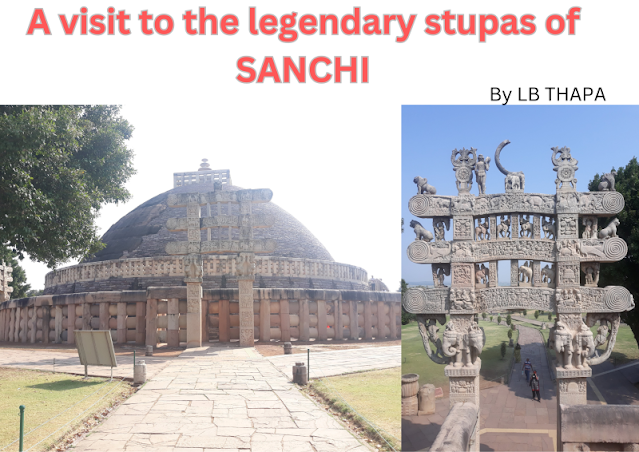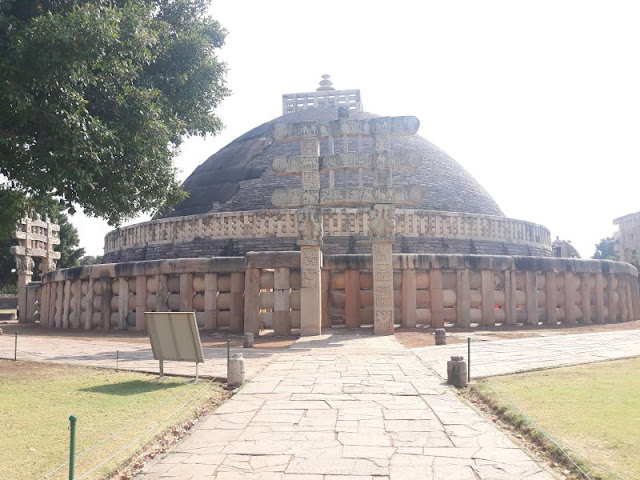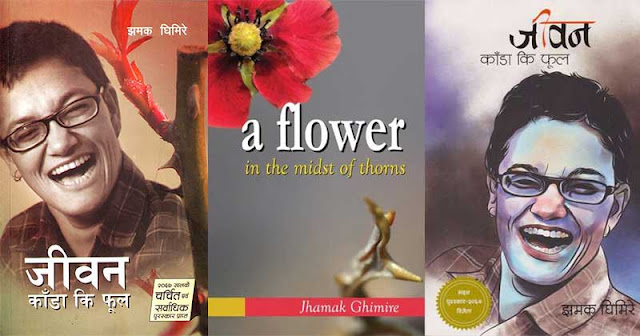A VISIT TO THE LEGENDARY STUPAS OF SANCHI
 |
| The magnificent stupas of Sanchi. Photos: LB Thapa |
By LB THAPA
Sanchi stupas hold a special place in the history of India. These stupas are considered one of the most important monuments of Indian architecture. Its grandeur carvings on balusters, pillars, and walls are the master class of art in the recorded history of India.
I feel very lucky to have visited this great historic place several times. I had the privilege because I was born and educated in Bhopal. Sanchi is only 46 kilometers from Bhopal. I continued visiting Sanchi until I completed my Master’s degree in Economics from Bhopal University in 1991. After 1991, I shifted to Nepal, and I could not visit Sanchi every year. But still, whenever I go to India, I never miss an opportunity to visit Sanchi.
A few years ago, I was invited by my college Hamidia Arts,
Commerce & Law College, Bhopal, to receive a felicitation. This
felicitation was given to me for the recognition of a book that I had written
about the Bhopal Gas Tragedy. I was one of the victims of the Bhopal gas
tragedy. On December 3, 1984, when the tragedy struck, I was an 11th grade
student. The book was well received in India and abroad. Now the book is
available on amazon.com. 
The main stupa of Sanchi. Its construction was started in the 3rd century BCE. Photo-LB Thapa 
Stupa number 3. This Stupa was built during the time of the Shunga dynasty. Photo-LB Thapa
In this article, I have written about all my experiences visiting Sanchi, a great historical monument. I am sure esteemed readers will like this article.
Even today, the surrounding ambiance of Sanchi is more like that of a village. There is a conspicuous absence of traffic congestion on the roads. The majority of the people in Sanchi are involved in agriculture-related activities. Based on the 2011 population census, the population of Sanchi is 8,401. Agriculture is the main profession of the majority of people in Sanchi. The lush green agricultural fields have spread over a large part of Sanchi, making Sanchi a perfect place for people who love nature, peace, and tranquility.
The stupas are located on the top of a hill that is about 91 meters high. Tourists can have a panoramic view of Sanchi village from the hilltop. However, according to ancient documents, Sanchi Hill was known as Kakanava. Because of its ancient stupas, monasteries, and Buddhist culture, Sanchi has always attracted thousands of pilgrims, travelers, and scholars.
Most historians and archeologists have agreed that the original stupas, which were made by Emperor Ashoka, were made of bricks. However, those stupas were destroyed in the 2nd century BCE, during the Shunga dynasty. But Agnimitra had refurbished those stupas by covering the entire stupas with stone slabs. During the Shunga dynasty, the second and third stupas were also built. In the 1st BCE, four more ceremonial gateways and highly artistic balustrades were also built. Hence, the entire development of stupas began during the Maurya Empire period (3rd century BCE), the Gupta Empire period (5th century CE), and the 12th century CE. Emperor Ashoka, after completing the monuments of Sanchi stupas, wanted to preserve and propagate the knowledge of Lord Buddha throughout the world.
Emperor Ashoka, the son of the Mauryan emperor Bindusara and the grandson of Chandragupta Maurya, ascended the throne of Magadha in 273 BC. After the battle of Kalinga, Emperor Ashoka held himself responsible for the loss of hundreds of thousands of lives in the war. He decided to embrace Buddhism and follow the path of nonviolence and peace for the rest of his life.
To show deep respect for Buddha and keep his memory alive, these magnificent Sanchi stupas were built over the relics of the Buddha. The importance of Sanchi stupas can be understood as the entire area of Sanchi stupas was declared a World Heritage Site by UNESCO in 1989.
The unique stupas of Sanchi were known for centuries as the symbol of dharma until the 12th century. Over time, the effects of Buddhism began to die out due to foreign invasions, and the glory of Sanchi stupas plunged into oblivion.
In 1818, Sanchi stupas attracted the attention of British
archeologists. For the first time, General Taylor made the first attempt to
conserve these ancient monuments. From 1822 to 1919, several archeologists made
their contributions to recovering several monuments that had been buried
underground. 
The Western Gateway of Stupa 1. Photo-LB Thapa 
The photo was taken from the top of Stupa 1. A train can be seen that left Bhopal railway station and heading to Mumbai. Photo-LB Thapa 
The Western Gateway of Stupa 1. Photo-LB Thapa
Sir John Marshall is credited with establishing a museum at the foothills of Sanchi Hill. Today, this museum is very important from an archeological point of view. Several important artifacts, related to different periods, have been kept in glass cabins for visitors. Those visitors who have an interest in the ancient Buddhist monuments of historical importance must visit the museum.
For the first time, visitors to Sanchi stupas should know that there are three main stupas. These three stupas are magnificent, glorious, and archeologically very important.
The first stupa was built by Emperor Ashoka. It is the largest among all stupas built within the area of Sanchi Hill. The present shape and size of the stupa have been completed in three different phases. The original stupa was built with bricks. During the Shunga period, the stupa was covered with stone slabs, and later railings were added. Likewise, four gateways were erected during the Satavahan rule. The diameter of the stupa is 36.60 m, and its height is 16.46m.
The second stupa was built by the Shungas in the 2nd century BC.
This stupa attracts visitors for its beautiful depictions of Buddha’s life on
railings, pillars, and walls. The third stupa is built near the first stupa.
This stupa, too, was built by the Shunga in the second century BC. The diameter
of this stupa is 15 m, and its height is 8.23m. The sacred relics of Sariputra
and Mahamodalaglayayana, who were the disciplines of Buddha, were recovered
from the base of this stupa. 
The Yakshini is seen under foliage as she stands in front of an elephant. Photo-LB Thapa 
Remains of the Ashokan Pillar in polished stone. Photo-LB Thapa 
A Buddha's statue in a meditating posture. It was built during the Gupta period. Photo-LB Thapa

Residence of monks, near the main stupa. Photo-LB Thapa
There are two easy ways to travel to Sanchi: by air and by train.
From Kathmandu, one can easily get a direct flight to Delhi or Delhi to Bhopal.
You can stay one day in Bhopal, and the next day you can take either a local
train, a bus, or a taxi. The train is more comfortable. But I advise you to
take a taxi from your hotel. They may charge you a little more money, but going
to Sanchi by taxi is more comfortable.
Visiting Sanchi by train is also comfortable. Several trains leave from Gorakhpur Railway Junction to Bhopal. All those trains that leave from Gorakhpur junction for Mumbai must pass through Bhopal.
Perhaps many people don’t know that the national emblem of India (four lions standing back to back) was taken from the Ashoka Pillar erected at the Sanchi stupas.
One last word at the end. If you want to visit Sanchi to see those
great stupas, then please feel free to contact me at my email. I can provide
you with some vital information that might make your visit to Sanchi stupas
more pleasurable.
 |
| The author stands in front of the main stupa. Photo-Narayan Thapa |
WANT TO REPRODUCE THIS ARTICLE?
All rights reserved. All the articles and photos published in this blog are the copyright property of this blog. I allow articles and photos to be reproduced only for information and educational purposes. For that, you must mention the author and the blog's name. Blog: read2bhappy.blogspot.com. I would appreciate it if you inform me by sending an email to writerlbthapa@gmail.com










.png)
Comments
Post a Comment